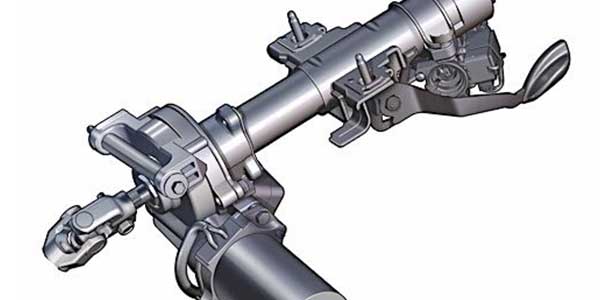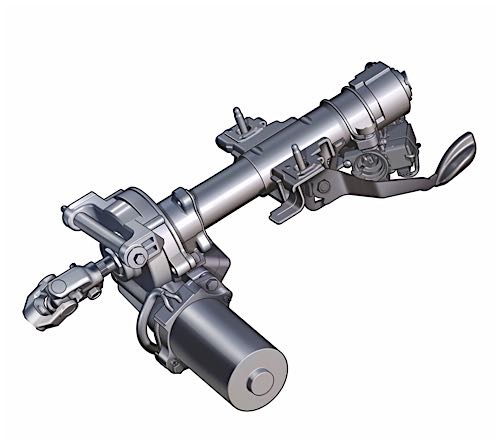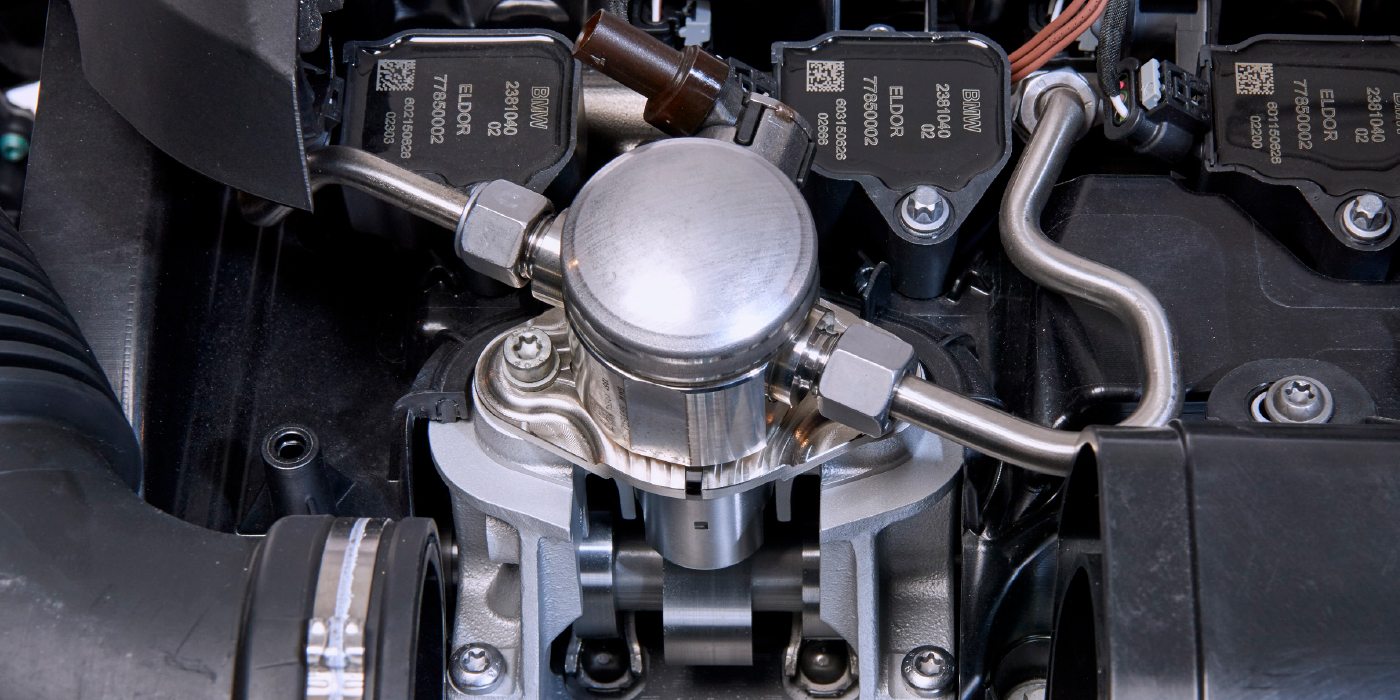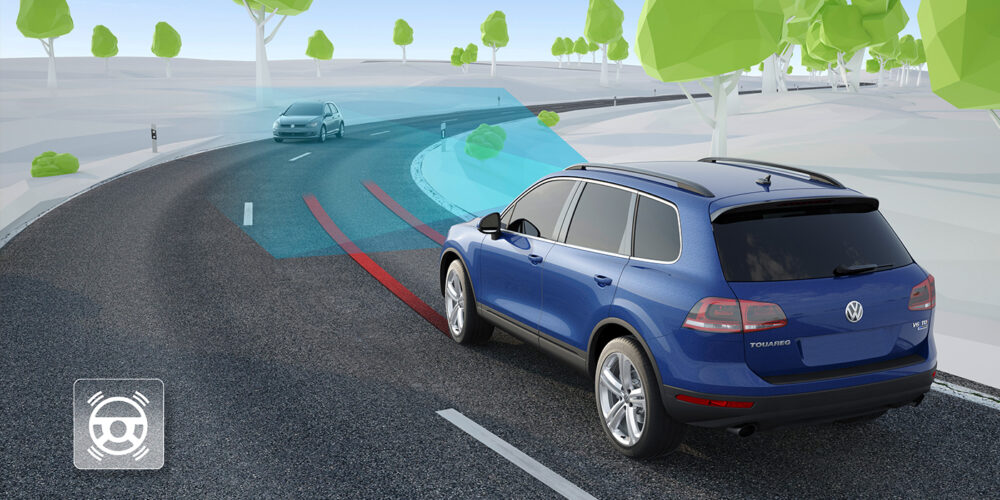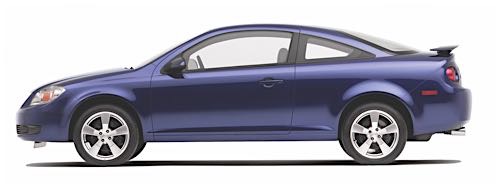 If you were to look at the underside of a 2005-’10 Chevy Cobalt or Pontiac G5, the layout doesn’t look that much different than a 1995-2004 Chevrolet Cavalier or Pontiac Sunfire. The basic ingredients of a strut front suspension and loaded beam axle rear suspension are still there. But, GM introduced several new ingredients that can change how this vehicle is aligned.
If you were to look at the underside of a 2005-’10 Chevy Cobalt or Pontiac G5, the layout doesn’t look that much different than a 1995-2004 Chevrolet Cavalier or Pontiac Sunfire. The basic ingredients of a strut front suspension and loaded beam axle rear suspension are still there. But, GM introduced several new ingredients that can change how this vehicle is aligned.
Electric Power Steering (EPS)
The greatest difference in the 2005 Chevy Cobalt can’t be seen from under the car. It is the electric power steering (EPS). Knowing the basics of this system can save you problems before the vehicle is pulled into the alignment bay.
When the driver turns the wheel, a steering sensor detects the position and rate of rotation of the steering wheel. This information, along with input from a steering torque sensor mounted in the steering shaft, is fed to the power steering control module. Other inputs, such as vehicle speed and inputs from the traction control or stability control systems, are factored in to determine how much steering assist is required. The control module then commands the motor to rotate a certain amount, and a sensor on the motor provides feedback to the control module so it can monitor the motor’s position.
If a sensor or other component in the EPS system fails, the self-diagnostics should detect the fault, set a code and disable power-assist. A warning light will illuminate to alert the driver, and the driver will notice a significant increase in steering effort when turning the vehicle.
The steering wheel position sensor determines the “on center” position. This is used to keep return assist from going over center once a turn is completed. The GM unit is a 5-volt dual analog triangle signal device with a valid signal voltage range of 0 to 5 volts. The sensors’ signal 1 and signal 2 voltage values will increase and decrease within 2.5 to 2.8 volts of each other as the steering wheel is turned. This information can be very useful during diagnostics.
In GM EPS systems, the Power Steering Control Module (PSCM) must be set up with the correct “steering tuning,” which differs in relation to the vehicle’s powertrain configuration, whether the vehicle is a sedan or coupe, and depending on tire and wheel size, etc. This may require a scan tool with flash capabilities.
If you are trying to diagnose an EPS or a suspension component that’s making noise, there is a simple trick. GM has issued a TSB (07-02-35-004 Feb. 02, 2007) regarding noise problems with EPS steering on the Cobalt, Chevy HHR and Pontiac G5. The bulletin describes a steering column rattle or knocking noise that may be heard or felt at low speeds (5 to 15 mph).
The EPS system can be temporarily disabled by removing the 60-amp EPS fuse in the underhood fuse block.
If the rattle persists, it is due to backlash within the steering column (assist motor gear mechanism). Replace the 60-amp EPS fuse and test drive again. If the steering column is identified as the source of the rattle/knocking noise, the steering column needs to be replaced.
Front Camber Adjustment
If this is not the vehicle’s first alignment, loosen both strut-to-knuckle nuts just enough to allow for movement. The factory-recommended procedure is to elongate the lower strut mounting holes. If the strut has not been modified previously, it is more profitable to install aftermarket cam bolts.
Front Caster
The front caster is not adjustable. If the front caster angle is not within specifications, inspect for suspension support misalignment or front suspension damage. Replace any damaged suspension components as necessary. The inboard rear bushing is susceptible to wear and damage that could produce positive caster. It will also make a clunking noise on acceleration and braking.
Front Toe
Ensure that the steering wheel is set in a straight-ahead position. Loosen the tie rod jam nut. Adjust the toe to specification by turning the adjuster. Tighten the tie rod jam nut to 68 Nm (50 ft.-lbs.) when the adjustment is completed.
Rear Toe and Camber
The rear suspension is a loaded beam axle. While it is difficult to damage this large part, it can be prone to wear and tear on the bushings, swaybar mounts and spring insulators. The rear suspension angles can be adjusted with the installation of a shim that is placed between the rear hub and axle mounting plate. A shim should be able to change toe or camber 1 to 1.5 degrees. If a shim is required, make sure that one is not already installed on the vehicle. If one is present, remove the old shim and measure the baseline angles. On some rear disc brake vehicles, the introduction of a shim may cause the caliper to bind or the rotor to strike the caliper bracket. Article courtesy Brake & Front End.

